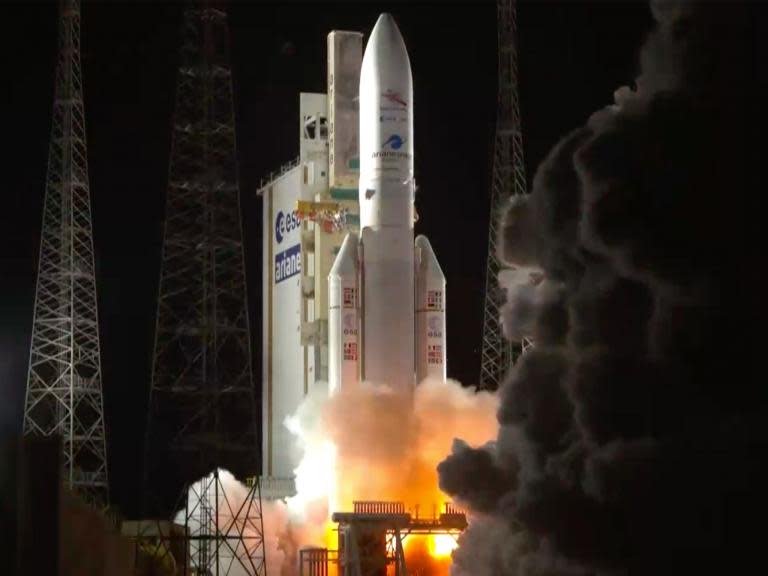BepiColombo: British-built rocket blasts off on Mercury mission
A British-built spacecraft has blasted off on a seven-year mission to Mercury hoping to uncover mysteries surrounding the solar system’s innermost planet.
BepiColombo was launched into space from the European space port in Kourou, French Guiana, on Saturday, as it began a five billion-mile trip to the Sun's closest natural satellite.
It was carried on top of an Ariane 5, the European Space Agency's (ESA's) most powerful rocket.
A joint endeavour between the ESA and the Japan Aerospace Exploration Agency (JAXA), the mission intends to gather information on the smallest and least-explored planet in the inner solar system.
Following the “escape trajectory” launch, BepiColombo will swing past the Earth in a wide curve before first heading for Venus.
In 2025 it will place two probes, one European the other Japanese, in orbit around Mercury.
“Launching BepiColombo is a huge milestone for ESA and JAXA, and there will be many great successes to come,” said ESA director general Jan Wörner.
“Beyond completing the challenging journey, this mission will return a huge bounty of science.
“It is thanks to the international collaboration and the decades of efforts and expertise of everyone involved in the design and building of this incredible machine, that we are now on our way to investigating planet Mercury’s mysteries.”
The transfer module carrying the orbiter was built in Stevenage by aerospace company Airbus, while the firm also assembled key components of the ESA orbiter at their British base.
Scientists hope the £1.4bn mission will shed new light on a planet that still holds many mysteries, such as why it has an oversized core made of iron and whether it holds traces of water.
The answers the mission produces could provide fresh insight on the origins and evolution of the solar system.
A key feature of BepiColombo is that it is the first interplanetary mission to employ advanced electric ion propulsion technology, which firing two at a time, will emit beams of electrically charged xenon gas.
They will be used not to accelerate the craft but to act as a brake against the Sun's enormous gravity.
“BepiColombo is one of the most complex interplanetary missions we have ever flown,” said Andrea Accomazzo, ESA flight director for the craft.
“One of the biggest challenges is the Sun’s enormous gravity, which makes it difficult to place a spacecraft into a stable orbit around Mercury.
“We have to constantly brake to ensure a controlled fall towards the Sun, with the ion thrusters providing the low thrust needed over long durations of the cruise phase.”
Only two spacecraft have previously visited Mercury. Nasa's Mariner 10 flew past the planet three times between 1974 and 1975, before its Messenger probe orbited the planet from 2011 to 2015.
BepiColombo was named after the late Giuseppe “Bepi” Colombo, an Italian scientist and engineer who played a leading role in the 1974 Mariner 10 mission.
Additional reporting by PA



